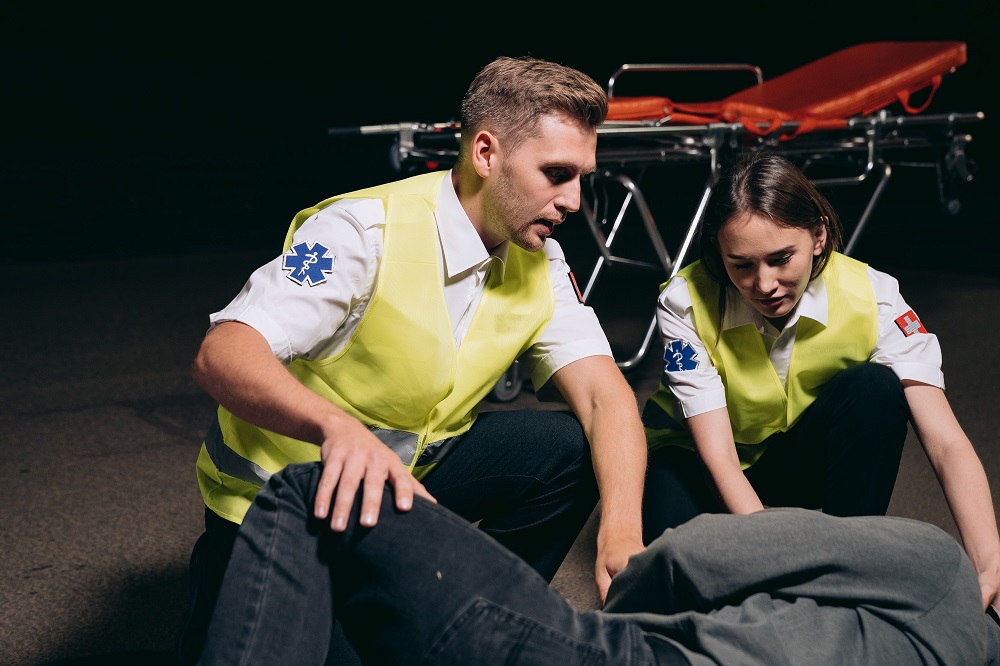If you’ve been following the news recently, you’ve likely heard about the tragic accident that took place at a music festival in Houston, Texas. Singer Travis Scott performed at his annual Astroworld Festival, but during his live set on stage, the onlooking audience packed in so tightly and moved in such a way that it caused a deadly surge of bodies, leaving at least 8 dead and dozens injured as the music went on. Those who lost their lives were young, ranging from just 14 to 27 in age.
In such a case of personal injuries and wrongful deaths, who should be held responsible for causing them? The performer? The event staff? The crowd itself? Is it a case of reckless endangerment, or a case of premises liability? When there are literally thousands of potential people who contributed to the dangerous unfolding of events—whether they intended to or not—it can be hard to pinpoint where to even start looking for answers.
How Crowd Surges Lead to Injuries or Death
A crowd surge occurs when a large group of people attempts to move into or throughout a space at once. When enough people are packed tightly into a finite area, and especially if they are stimulated by some type of engaging entertainment, their movements can become so chaotic and uncontrollable that people become tightly trapped between one another. They may not be able to escape or breathe easily, which can lead to panic. In even worse scenarios, some crowd surges cause those trapped within them to fall, creating the potential to be trampled by those still on their feet.
In the case of the Astroworld concert, roughly 50,000 people were standing in front of the stage as the main event unfolded. A surge began to occur from the back of the crowd to the front as eager onlookers attempted to push their way closer to the stage. As they did, it began a ripple effect of movement that panicked people toward the front, who then attempted to turn around and escape the surge. This movement from two directions often leaves trapped spectators in the middle.
Reports from survivors after the fact detailed witnessing people who were so tightly compressed by this surge of bodies that they could not get any oxygen into their lungs. Asphyxiation is often the leading cause of injuries and death in crowd surge cases, and some of the victims who pass out or lose their footing can also fall to the ground. Being trampled by hundreds of panicked feet fleeing for their lives can cause severe injuries like broken bones, internal bleeding, paralysis, and death.
Unfortunately, this kind of mob mentality is not new. There have been several cases of deadly crowd surges over the decades, especially with large crowds in an entertainment event setting. In 1979, 11 people died during a concert by the rock band The Who. In 1989, nearly 100 deaths occurred at a soccer stadium in England. And in 2015, a collision of two crowds at the hajj pilgrimage in Saudi Arabia led to an astounding 2,400 deaths.
Finding Fault for Crowd Surge Injuries and Deaths
It can be extremely difficult to regain control of a large crowd once it starts moving in such a dangerous pattern. This being the case, should victims of the surge seek damages from the eventgoers who started or contributed to it? Mob mentality takes force in large numbers and quickly spreads to even more people. And the panic it causes sends others fleeing for safety, which in turn can cause even more people to become trapped and injured. Should those attempting to save their own lives be held responsible for the damage they cause? That is a difficult stance to take.
Most often, the facility and its staff should be held responsible for allowing so many people to pack into one space. The event venue and its operations should be closely scrutinized after a scenario like the Astroworld crowd surge. Earlier in the day, there were reports of stage and spectator areas already packed too tightly and preventing people from standing comfortably. But attendance numbers only increased after that, adding to the chaos. Events should be designed in a way so that the density of the crowd does not exceed guidelines set by the National Fire Protection Association. This includes providing enough space for people to freely move around, as well as designating large enough gaps for people to move in and out of the space.
Clearly, this was not the case during the Astroworld event. Even so, in deciding to hold the event responsible for injuries and deaths, where does one place fault? With the event organizers and layout designers? With the ticket sales office for increasing attendance? With the security staff who didn’t prevent people from packing in? Or with the performer on stage who riled the crowd up, then kept performing as people dropped to the ground? The only way to know for certain is through a thorough investigation of each and every component of the event.
What You Should Do if You’re Caught in a Crowd Surge
Attending live events with eager peers is an exciting pastime, and largely safe. Not every event gets so out of control, so such events shouldn’t be banned from occurring altogether. Instead, venues should be held to high and strict standards of safety before, during, and after their events. It is the responsibility of event organizers and staff to recognize and mitigate the risks of a surge, but that doesn’t always happen. When that’s the case, it may be up to you to recognize unsafe crowd surge signs and be your own advocate.
Experts advise staying on the edges of a crowd. If you see pushing and shoving, move away from where it’s occurring. And if you find yourself in a dangerous crowd before you have a chance to move away, the most important thing you can do is attempt to maintain your balance and stay upright. If possible, refrain from yelling or calling out in order to preserve the oxygen in your lungs. And try to keep your arms at chest level to protect your rib cage.
Though panic in such a scenario can be hard to overcome, if you are able, always try to help others around you. If a crowd of people attempts to help others instead of scrambling to flee, everyone will be better off. But once again, whether you are able to advocate for yourself and others or not, remember that it should never be the responsibility of the crowd itself to prevent a surge from happening. The venue should be held accountable for allowing the dangerous situation to unfold in the first place.
A crowd surge doesn’t exclusively include thousands of people at a music festival—they can happen in overcrowded rooms like bars, restaurants, or movie theaters too. In any scenario where proper safety procedures aren’t adhered to or followed and it leads to injury or death, you have a right to hold the responsible party accountable for the damage caused.
If you’ve suffered injuries or lost a loved one due to a crowd surge, it can be difficult to know how to proceed with a lawsuit against the venue or event. This is when a practiced personal injury attorney can step in on your behalf. A team like The Whisler Law Firm has decades of experience with a variety of personal injury and wrongful death scenarios, and knows which avenues to investigate further and the best legal tactics to employ.
Schedule a free consultation with our team by calling 833-529-5677 or by using our easy online form. We want to hear about what you experienced, the injuries you suffered, and plan the best course of action to take to hold the right people accountable for making sure your pain and suffering is compensated for.



